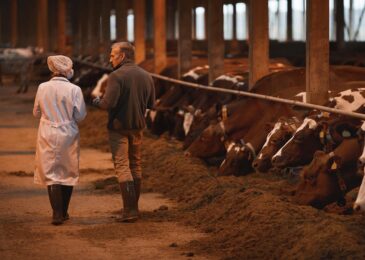
Year on year, we are seeing hotter temperatures in the UK. In 2020, we saw temperatures reach nearly 38°C in some parts of the country in the summer months, which is far hotter than we, and our horses, are accustomed to. Climate change isn’t just impacting the hotter seasons, as the effects are also bringing much warmer, wetter winters.
Thankfully, we are able to look to other countries with hotter climates where horses are kept, so we can utilise the tactics they use in order to manage the issues that arise as the temperature rises.
Exotic Equine Diseases
Many diseases found in horses in hotter climates are now beginning to be seen in the UK. The warmer, wetter winters has had a profound effect on the ecology of insect disease vectors, including midges, mosquitoes, and ticks. This has resulted in their range extending northwards, with our milder winters resulting in year-round breeding and feeding activity. This has created the opportunity for never-before-seen diseases arriving in the UK. These can include:
- EIA
Caused by large biting flies such as horseflies and deer flies.
- WNV
A vector-borne encephalitis virus of birds transmitted by Culex mosquitoes.
- AHS
Caused by Culicoides midges.
Cooling Stalls and Providing Shade
Temperatures are set to continually rise, making the summer months increasingly difficult. It is essential that you update your horse’s routine, according to their environment. If your horse lives outside, shade is of the utmost importance. An excellent investment is a run-in shed with ample ventilation. If you keep your horse in a stall, equip the stall and barn aisles with fans to keep hot air moving, keeping the wire cords and fans out of the horse’s reach for safety,
When it’s time for turnout, choose a cooler part of the day or consider the night time, if possible. Always bear in mind, shade is just as important during a horse’s turnout as it is for a horse that is permanently outdoors.
Summertime Riding and Exercising
Riding and exercising your horse are vital, but you must alter your routine in accordance with the summertime climate. To make your horse as comfortable as possible, you must take certain factors into consideration.
- Keep the ride short.
Lighten your horse’s work and try to choose a cooler part of the day to exercise them. The morning or late evening is best as it is less humid, and they will be able to breathe easier.
- Allow your horse to properly cool down before being fed grain.
Choosing the cooler parts of the day for exercise will ensure that the horse is consistently fed during cooler parts of the day, creating a consistent schedule, and preventing equine colic.
- Help your horse cool off.
Hose your horse down after riding and remove any excess water. Remember, horses can only cool down when sweat evaporates from their skin, which is far more difficult in warmer climates.
Horses Experiencing Heat Stress
Rising temperatures can sometimes result in heat stress, despite your best efforts. Symptoms can include:
- Increased heart rate
- Flaring of the nostrils
- Laboured breathing
- Excessive sweating or not sweating at all
- Lethargy
- Dehydration
If your horse experiences any of these symptoms, it is essential you move him or her out of direct sunlight. Take the tack off immediately before hosing your horse down until they are cool to the touch. Offer your horse fresh water following this and give them horse feeds containing electrolytes.
If your horse is not sweating, he or she may have an underlying endocrine issue in which case you should consult your veterinarian immediately.




